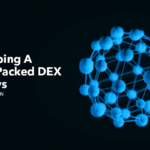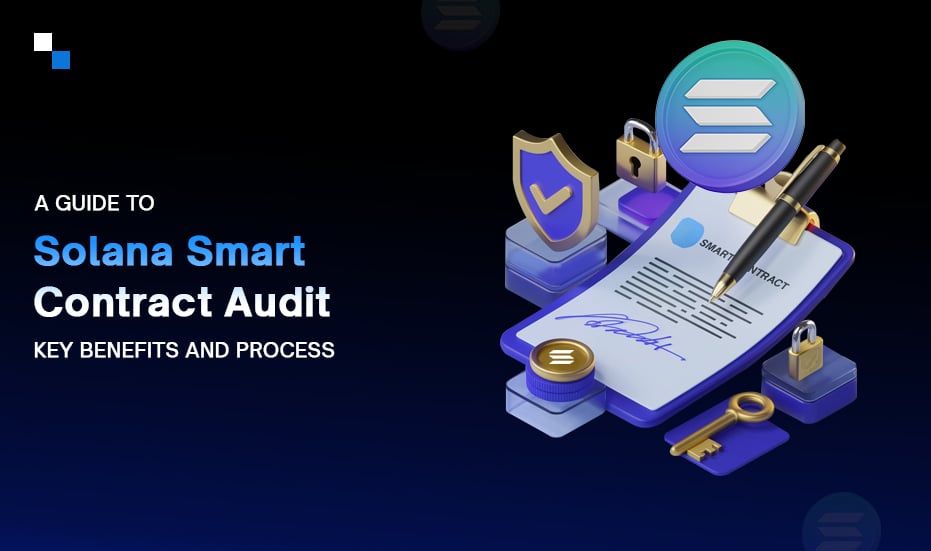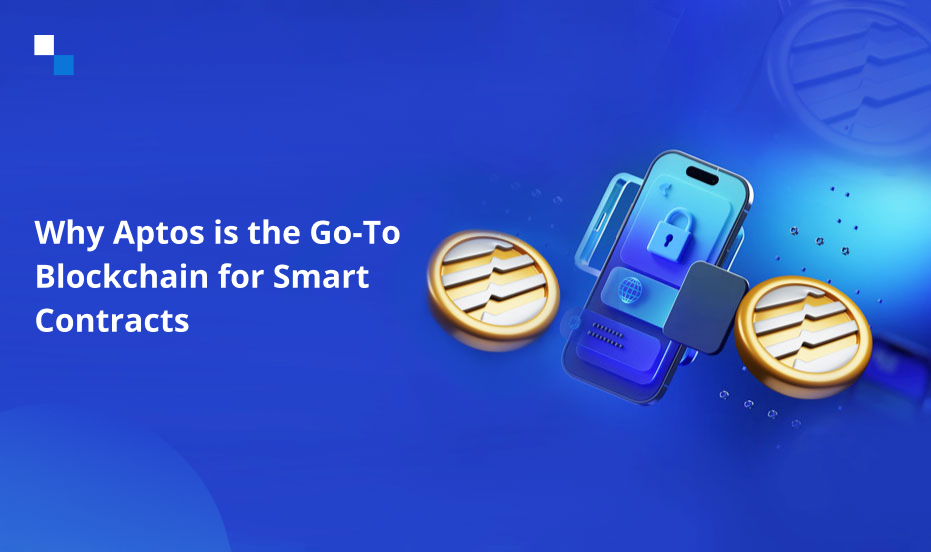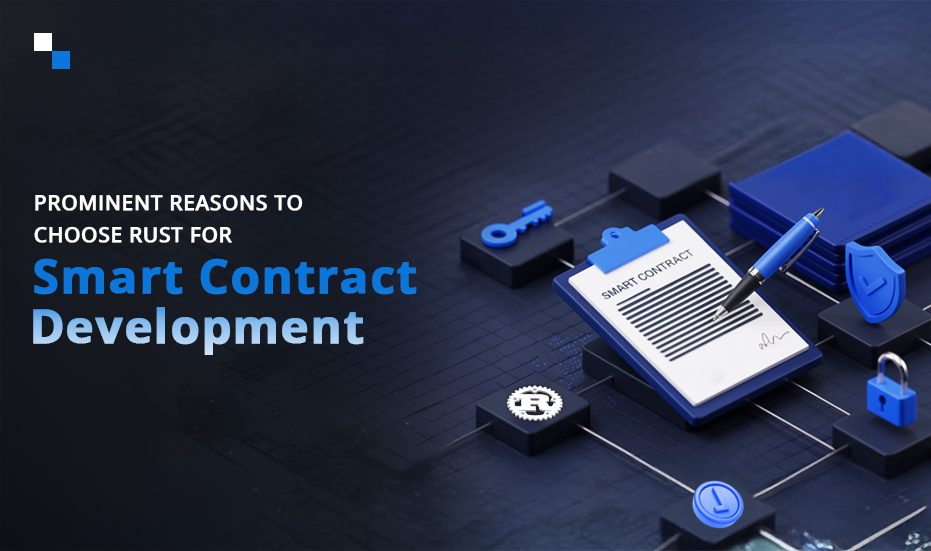
Launch your DEX in 7 Days With White Label Decentralized Exchange
September 26, 2024
How Metaverse Can Improve Customer Experience Leading To More Revenue And Conversion?
September 26, 2024As we entered 2024, we saw exponential growth in the technology and rapid adoption of blockchain-based smart contracts for business automation. No wonder, rapid changes in market dynamics have aroused the need to integrate smart contracts to speed up the business processes with complete assurance of security.
For those who do not have a clear understanding of smart contracts, let me tell you that these are self-executing programs where the terms of the agreement are directly written into code. The use of smart contracts not only speeds up the business processes but also enhances security, apart from avoiding the need for intermediaries.
Today, we will discuss key trends shaping smart contract development in 2024, including the rise of AI-powered smart contracts, Layer 2 solutions, hybrid formats, and real-life use cases.
Market Statistics: The Growing Smart Contract Ecosystem
Before diving into the trends, let’s look at some market statistics that highlight the growing importance of smart contracts:
Market Size: According to a report by Fortune Business Insights, global smart contracts market size was valued at 1.71 billion in 2023. The market is expected to be USD 2.14 billion in 2024 and reach up to USD 12.55 billion by 2032 with a CAGR of 24.7% in the forecast period 2024-2032.
According to Deloitte, more than 80% of supply chain professionals believe that blockchain technology underlying smart contracts would dramatically simplify processes, automating the execution of contracts by reducing the human error rate.
Companies employing smart contracts have even shown decreases in transactional costs of 30%, thus proving the scenario of how this new technology may redefine the old dynamics of a classical supply chain.
PwC research finds that 84% of organizations use blockchain in business operations. It is not a trend, but a movement in the way of doing business. With the market size statistics that escalate from $3 billion in 2020 to more than $69 billion by 2027, the need to understand blockchain technology has never been deeper.
These statistics underscore the growing significance of smart contracts across various industries and the increasing demand for smart contract development services.
Trend 1: The Rise of AI-Powered Smart Contracts
One of the exciting new trends in 2024 is the merging of artificial intelligence into smart contracts. Such integration changes and modifies the creation, execution, and administration of smart contracts, unlike previous occurrences.
Key Features of Smart Contracts with the Integration of AI:
- Smart contract generation: AI algorithms will be able to produce intricate smart contracts by using simple natural language input. This will ultimately reduce the time needed to create a contract and the expertise required to do so.
- Dynamic Adaptation: AI-based smart contracts can adapt in real time to conditions that change. Terms and execution parameters will change based on agreed rules and data feeds coming from external sources.
- Better Decisions: The application of machine learning models will greatly improve the ability of decision-making capabilities. They are much more advanced compared to if-then statements, which often present possibly relevant variables.
- Predictive Analytics: Applying AI to analyzing historical contract data will help predict impending issues or potential opportunities for proactively managing contracts.
Trend 2: Layer 2 Solutions for Scalability and Efficiency
As blockchain networks face the issue of scalability, layer 2 solutions represent the very emerging trend in smart contract development. Improved off-chain scaling solutions enhance smart contracts’ performance and economic efficiency.
Key Layer 2 Solutions:
- Improved Transaction Speed: Base-layer blockchains have very minimal possibilities compared to layer 2 solutions, which process thousands of transactions per second.
- The layer 2 solutions reduce transaction costs greatly by moving transactions off the main chain thereby making smart contracts interaction affordable.
- User Experience: Faster transactions and reduced costs translate into a better user experience, which becomes essential for mainstream adoption.
- Better Privacy: Certain layer 2 solutions have enhanced privacy features, thereby offering more confidential operations for smart contracts.
Popular Layer 2 Solutions in 2024
- Optimistic Rollups
- ZK-Rollups
- State Channels
- Plasma Chains

Trend 3: Hybrid Smart Contracts
In 2024, hybrid smart contracts evolve with the on-chain and off-chain components. This approach makes use of a combination of blockchain’s security and transparency and a very powerful and flexible off-chain computation and sources of data.
Major Key Features of Hybrid Smart Contracts:
- Advanced Oracle Integration: Such complex Oracle networks deliver critical real-world data for advanced smart contracts. That means further complexity and responsiveness to their applications.
- Off-Chain Computation: Complex computations are carried out off-chain and then verified on-chain, cutting the cost and improving scalability.
- Interoperability: The hybrid contracts will be able to interact with numerous other blockchains and old traditional systems as well, bridging separated ecological islands.
- Privacy: Sensitive data can be processed off-chain while still using blockchain for transparency and immutability wherever needed.
Trend 4: Increased Focus on Security and Auditing
With smart contracts holding more and more valuable assets and carrying critical functions, security has assumed center stage. In 2024, we are witnessing a more intense focus on smart contract auditing and security.
Smart Contract Security Key Developments:
- Advanced Auditing Tools: New AI auditing tools with higher accuracy detection of vulnerabilities and potential exploits.
- Formal Verification: An increasing number of projects use formal verification to mathematically prove the correctness of a smart contract.
- Bug Bounty Programs: Large-scale bug bounty programs are the norm these days when it comes to big smart contract projects.
- Standard Security Guidelines: Industry-wide security standardization and best practices in this regard are also being developed and put into practice by all.
Trend 5: Real-World Asset Tokenization
Tokenization of real-world assets is one of the trends seriously gaining momentum in 2024, and this is largely attributed to smart contracts.
Asset Tokenization in Key Areas:
- Real Estate: Tokenization is bringing more and more people to divide ownership rights of physical properties.
- Art and Collectibles: Ownership rights of physical art pieces and collectibles are now easily represented as NFTs, and this is becoming mainstream.
- Financial Instruments: Stocks, bonds, commodities, etc. from the traditional financial products domain are getting tokenized for higher liquidity and accessibility.
- Intellectual Property: Patents, copyrights, and IPs are being tokenized, creating new sources of revenue for the creators.
Conclusion: The Future of Smart Contract Development
The rapid evolution of the smart contract landscape will continue to propel us through 2024. The trends we have discussed in previous sections – AI integration, layer 2 solutions, hybrid formats, enhanced security, and real-world asset tokenization are changing what we consider the development of smart contracts and how we use smart contract development services.
Want to get quick answers for your technical curiosities? Contact Antier. We are experts in creating smart contracts for diverse types of industries, ranging from finance to supply chain management and from insurance to real estate.
We will help leverage these trends, as we have a team of smart contract developers who are proficient in implementing cutting-edge solutions tailored to specific needs.



